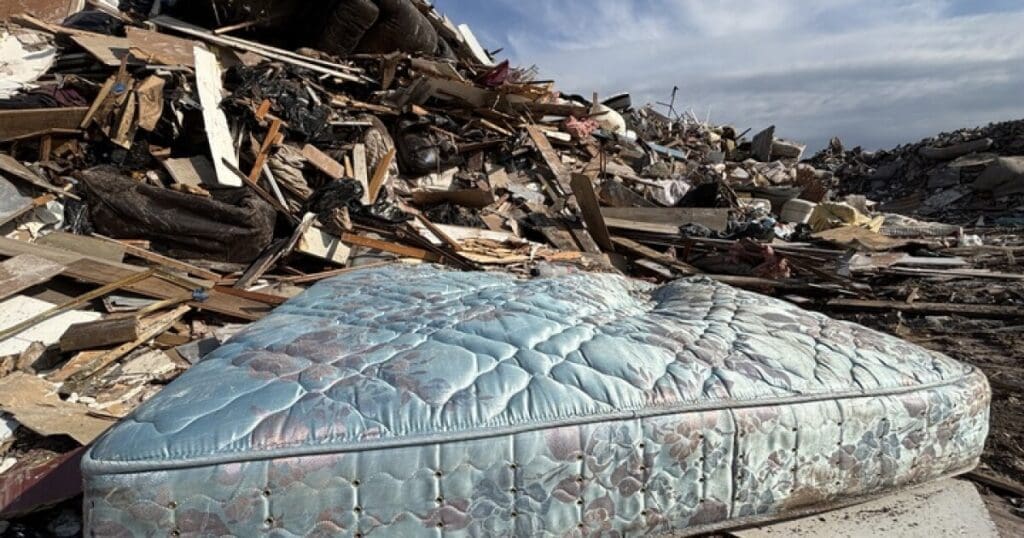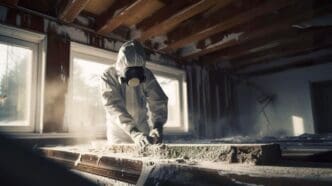Natural disasters—wildfires, hurricanes, floods, and tornadoes—are on the rise, affecting millions every year. In 2020 alone, the U.S. experienced a record 22 separate weather and climate disasters that caused over $1 billion in damage each. Amid this increasing frequency and intensity of events, the hidden dangers associated with these disasters can pose serious health risks, particularly from materials containing asbestos. Surprisingly, over 30 million homes in the United States contain asbestos, predominantly in structures built before the 1980s. This article serves as a vital guide to understanding the risks, preventative measures, and safety tips related to asbestos exposure during natural disasters, providing essential information for homeowners, emergency responders, and cleanup crews.
The Hidden Threat: How Is Asbestos a Risk During a Natural Disaster?
Asbestos is a naturally occurring mineral that was widely used in construction materials due to its fire-resistant properties. Unfortunately, while asbestos is safe when undisturbed, natural disasters can turn it into a significant health threat. When buildings suffer damage during wildfires, hurricanes, or floods, various asbestos-containing materials can be disturbed, leading to the release of harmful fibers into the air. Once inhaled, these microscopic fibers can linger in the lungs and lead to serious conditions like asbestosis, lung cancer, and mesothelioma over the years.
Moreover, many homeowners do not realize the potential for asbestos exposure until it’s too late. In the aftermath of a disaster, the urgency to clean up and restore normalcy can overshadow the need for caution. As such, understanding the materials that could pose a risk and the steps to take before, during, and after a disaster is essential for protecting your health and that of others in your community.
At-Risk Groups During Disasters: Protecting Our Heroes

During natural disasters, certain groups face a higher risk of asbestos exposure. Emergency response crews, including firefighters, law enforcement officials, and military personnel, navigate unstable environments, often coming into direct contact with debris containing asbestos. When they are working tirelessly to restore safety, these professionals may inadvertently inhale harmful fibers. The need for protective gear is paramount to their health and safety.
Homeowners also face significant risks as they rummage through damaged property in search of personal belongings or begin initial cleanup efforts. Whether it’s an elderly resident looking for treasured keepsakes or a young family returning home, the urge to dig through debris can lead to exposure. Hence, it’s vital that everyone in the affected areas remains aware of the risks and adopts the necessary precautions.
High-Risk Occupations: Know the Risks

Several occupations are particularly susceptible to asbestos exposure during natural disasters. Firefighters are often the first responders to affected areas, and their need to enter burning structures puts them at risk of inhaling asbestos fibers. Similarly, law enforcement officials and emergency response workers face potential exposure when they assist in evacuations or secure hazardous areas.
Cleanup crew members are also at high risk as they work to remove debris and restore normalcy. In many cases, these workers may lack adequate training to identify asbestos-containing materials, putting them in danger. It is essential for those in these high-risk occupations to undergo proper training and to always use appropriate personal protective equipment (PPE).
Products Containing Asbestos: What to Look For

The construction materials in older buildings can contain a myriad of asbestos products. Common materials include roofing felt, pipe lagging, block insulation, adhesives, ceiling tiles, and even textured paints. Knowing which materials may contain asbestos prepares homeowners and professionals to handle them safely.
During natural disasters, wind, fire, or water damage can compromise these materials, leading to the release of harmful fibers. If you suspect that your building contains asbestos, it is crucial to avoid disturbing it. Asbestos abatement professionals can perform safe removal and disposal when necessary, ensuring that you mitigate exposure risks.
Preventing Asbestos Exposure: Stay Informed

Natural disasters present distinct asbestos risks, and understanding these can help in prevention efforts. For example, during wildfires, the intense heat can cause asbestos fibers to become airborne, while hurricanes can create exposure threats through wind and flooding. Being prepared for these events is vital to minimizing your risks.
Some preventive measures include creating an emergency plan, educating yourself about potential hazards in your area, and knowing how to respond when a natural disaster strikes. The more informed you are, the better equipped you will be to handle the ensuing chaos without compromising your health.
Safety Tips: Preparing for Natural Disasters

When it comes to minimizing asbestos exposure during a natural disaster, a proactive approach can make all the difference. Wetting materials before moving them can help reduce airborne fibers, while wearing NIOSH-approved N-100 or P-100 respirators provides essential respiratory protection. Additionally, always wear protective gear, including gloves and masks, and avoid moving damaged construction materials unless absolutely necessary.
Consulting asbestos abatement professionals is highly recommended for larger quantities of materials or extensive damage. They possess the expertise to assess the situation safely, guiding you in handling asbestos-containing materials effectively.
Wildfires and Asbestos Exposure: A Growing Concern

Wildfires have become more frequent and severe, especially in the western United States. These natural disasters pose a significant risk of asbestos exposure, particularly when they affect older structures. As residences built before 1980 are more likely to contain asbestos, it’s crucial for residents in fire-prone areas to remain vigilant.
If a wildfire is imminent, the best course of action is to evacuate if instructed to do so. Utilizing NIOSH-approved masks can help keep harmful fibers at bay, and staying indoors during severe wildfire smoke conditions can help avoid inhalation of toxic particles in the air.
Hurricanes and Asbestos Exposure: Wind and Water Woes

Hurricanes unleash destructive forces—wind, storm surges, and heavy rain—capable of damaging buildings and releasing asbestos fibers into the environment. After the storm passes, debris management becomes critical to avoid exposure risks. It’s essential to wet debris containing asbestos before handling it, as this minimizes the potential for airborne particles.
Double-bagging materials while still wet ensures that fibers remain contained. Wearing appropriate respirators and protective gear during cleanup is vital for safeguarding your health, as is consulting experts for large asbestos deposits that may require specialized removal techniques.
Preparing for Other Disasters: The Importance of Awareness
Natural disasters such as floods and tornadoes also raise concerns about asbestos exposure. While these events may not be as predictable as hurricanes or wildfires, awareness and preparation are key. Having a plan in place for various disasters not only helps protect your health but also assists in safeguarding your family and community.
Creating a disaster plan allows you to assess potential risks in your area and develop strategies for response. Additionally, designated emergency contacts and resources can prove invaluable in times of need. Make it a priority to stay informed about local and federal resources available to help you navigate the aftermath of any disaster.
Resources and Contacts: Stay Prepared
The aftermath of a natural disaster can be chaotic, but staying informed and prepared can significantly impact your health and safety. Utilize resources from agencies like FEMA, the American Red Cross, and the EPA for guidance on disaster preparedness and response. These organizations provide vital information on evacuation plans, emergency kits, and health risks associated with disasters.
By staying connected with local emergency management agencies and community organizations, you ensure that you remain alert and prepared. Education is your best defense against the risks associated with asbestos exposure, especially when facing the unpredictable forces of nature.
Conclusion: Navigate the Storm Safely
Understanding the risks associated with asbestos during natural disasters can save lives and improve health outcomes. Equip yourself with knowledge and proactive measures to minimize exposure. To delve deeper into this crucial topic, explore more in our comprehensive Guide to Asbestos and Natural Disasters.
Source & Credit: The Mesothelioma Center at Asbestos.com – The country’s most reliable resource for mesothelioma information, focusing on advocacy, raising awareness, and connecting individuals to the finest mesothelioma resources available. For 18 years, they have fostered a community of leading doctors, hospitals, specialists, and survivors to guide patients and their families.








